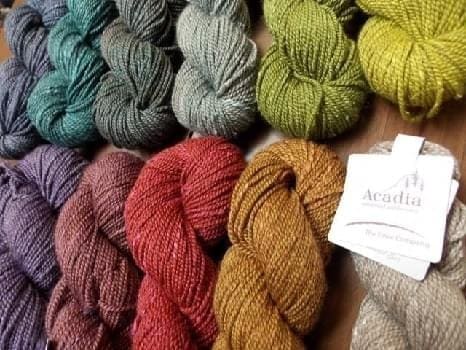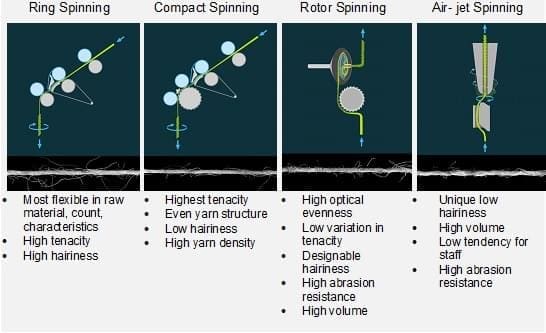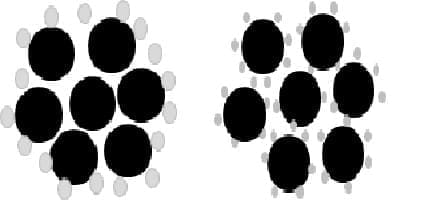Yarn Structure and its impact on Soft
Prof Dr.S.P.Borkar,Nitin.T.Patil
Veermata Jijabai Technological Institute (VJTI),Mumbai
Abstract
The process of converting fibres into yarn is complex, and requires many investigations and new technical solutions. Ring, Compact, Rotor and Air-jet spinning systems provide yarn with different structures and properties. Each system has its limitations and advantages in terms of technical feasibility and economic viability.
The output potential of the Rotor and Air-jet spinning has quickly captured the attention of spinners who have a hard time staying in business due to the persistent and growing global competition. Any improvements in terms of the quality or count range would increase the demand for new spinning systems and broaden their application areas.
Keywords:
Air -Jet spinning, Ring spinning, Compact spinning, Rotor Spinning, Handle,Comfort.
Introduction
The most common spinning systems to convert fibres to yarn are Ring, Compact, Rotor, and Air-jet spinning. Characteristics of yarns made from each of these systems & their limitations are briefly described under.
Ring Spinning
In ring spinning, the fibre mass of the rove is reduced by a drafting unit. The twist inserted moves upwards and reaches the fibres leaving the drafting unit. The fibres lay around one another in concentric helical path. The normal force encountered by the fibres enhances the adhesive forces between the fibres and prevent fibres from flying or slipping past each other under the tensile strain.
It is the process of attenuating the roving strand until required final yarn count achieved and inserting twist to the fibres by means of a rotating spindle and winding the yarn on a bobbin. These three stages take place simultaneously and continuously. The ring yarn is characterized by high flexibility in the use of the raw material, the yarn count and the yarn character. It possesses a high degree of strength and yarn hairiness.
Compact Spinning
All the improvements and optimizations of the ring spinning process only partially relieve the problems caused by the spinning triangle. The spinning triangle formed by the fibre bundle at delivery roll nip is the weakest point in the ring-spun yarn forming process.
Based on a thorough analysis of the spinning triangle structure, reached was the conclusion that only successful solution of the spinning triangle problem would enable the production of the ring-spun yarn with less hairiness and better physical-mechanical properties.
The ring spinning process with the minimized spinning triangle is called the compact (condensed, compressed).
Compact is also distinguished by extremely high strength, even yarn structure, low hairiness and high yarn density.
Rotor Spinning
In rotor spinning, fibre bundle from the sliver feed stock is separated into individual fibres with an opening roller in an air stream and fibre are re-collected in the rotor groove. The rotating, brush-like open yarn end first catches fibres in the core and then with further rotation gradually takes up fibres towards the periphery. In the interior, where the fibres cannot avoid the twist, the strand becomes more compact but also somewhat harder. On the other hand, towards the exterior, compactness and hardness fall off to an increasing degree, since here the fibres are partially less twisted-in. Shortly before leaving the rotor groove the twisting yarn catches some single fibres, which then are wound around the fibre compound like wrappers. Those “wrapper fibres” are a typical characteristic of rotor yarns.
Air -jet spinning
In Air- jet spinning, a sliver is fed to the drafting system; the drafted sliver enters a spinning nozzle. The leading end of the fibres forms the parallel yarn core; the free fibre ends are wound around the yarn core by the air in the spinning nozzle. The Air- jet yarn is then wound onto a package.
The air-jet-spun yarn structure consists of core fibres without significant twist and covering fibres with a genuine twist, which ultimately produces the corresponding yarn tenacity. The specific yarn structure results in yarn tenacity between that of a ring-spun yarn and that of a rotor-spun yarn. (2) (3) (4)
Fig.1 – Characteristics of the yarns produced from different spinning system (1)
Yarn structure and its influence on end product
The yarn structure primarily depends upon the raw material, spinning process, spinning principal, machine settings, twist, etc. The structure can be voluminous or compact, high or low hairiness, soft or hard, round or flat.
But yarn structure is not simply appearance. It has a greater or lesser influence on:
- Handle
- Strength and elongation
- Resistance to abrasion
- Dye absorption
New spinning system– Pros and Cons
Compared with ring spinning, they offer the following advantages:
- High production rates
- Elimination of processing stages
- Considerable reduction in personnel and space and energy consumption
- Relative ease of automation.
Yarn characteristic of Rotor and Air-jet yarn is differing from that of ring-spun yarn, which still represents the basic standard for comparison.
The main problems of the new spinning systems are:
- Greater demands on the raw material;
- Market segments limited to a narrow count range, specific raw material types, specific end products
- High level of know-how needed for spinning optimization and process maintenance
- Expenditure on repair and maintenance.
Role of softness for consumer while purchasing Textiles
- Optical impression
- Touch/ Hand
- Price
Whenever we go out for shopping, usually we get attracted by colours of fabric displayed in the showrooms. So colour is the first and foremost attribute which tempts us while purchasing. Second is the fabric feel which stimulates the purchase decision further. So according to the survey conducted by Cotton Incorporated, softness of the fabric contributes to 84% irrespective of the gender of the buyer.
Fig. 2 – Cotton Incorporated Lifestyle Monitor Survey (5)
In case of cotton knits, soft hand feel is the most expected characteristics of the garment whether it is an innerwear or an outerwear.
Role of Spinning Systems in improving softness
Yarns produced from new spinning systems like rotor and air-jet have harsher feel as compared to ring spun yarn due to their different outer structure. With the proper selection of raw material, spinning components and machinery setting, now it would be possible to compensate in order to improve softness even on new spinning systems. With this, the gap between new spinning system and ring spun yarn can be narrowed down without compromising the parent benefits like better abrasion and pilling resistance of Rotor and Air- jet spun yarn respectively.
Chemical Processing
Textile wet processing have three stages: pre-treatment, coloration and finishing.
Pre-treatment: It is a process, where grey fabric undergoes scouring and bleaching to remove the natural impurities, pectin, waxes as well as added impurities. This is a prerequisite to better and uniform coloration
Coloration: It is a process of adding colour to textile product such as fibre, yarn and fabrics
Finishing: It is the final step in the manufacturing process; the last chance to provide the properties that customers value. Finishing completes the fabric performance and gives it special functional properties including the final ‘touch’.
Use of various softeners in the final stage of chemical finishing by exhaust, pad or deposition on surface by other means such as foam finishing, spraying etc. is used to impart the desired soft handle. Various softeners such as organic (cationic, anionic & non-ionic), polyethylene emulsions & silicon emulsions (Macro, Micro,Nano) are available in the market & being used by customers based on the desired results & cost-effectiveness. Among these , the silicon emulsions & silicon based combination softeners are extensively being used for the finishing of cotton knits.
Silicone softeners are becoming extremely important because of their very good softness and greater wash performance as compared to others. The mechanism of softening by silicone treatment is due to flexible film formation. The reduced energy required for bond rotation makes the siloxane backbone more flexible. Therefore, polysiloxanes form a flexible film on fibres and yarns and hence reduces the inter-fibre and inter-yarn friction. Thus, the silicone finishing of textiles produces an exceptionally soft handle combined with other properties such as superior smoothness, greasy feel, excellent body, improved crease resistance, etc. (6) (7)
Silicone softeners are based on macro and micro emulsions. Particle size of macro emulsion silicone softeners is 150-250 nm while that of micro is lower than 30 nm. Due to this fact, they penetrate the inner structure of the yarn or the fabric while macro emulsion silicone softeners settle on the surface of the yarn or the fabric (Fig no.3). Macro emulsions also have lower washing fastness compared to micro emulsions.
Macro and micro emulsions are generally amino silicones. Micro silicone emulsions give a permanent feel to the fabric with a high degree of softness. Amino functional silicones have shown good softening ability.
(A) (B)
Fig. 3 – Cross section of yarns treated with silicone softeners. a Macro emulsion silicone particles deposited on the yarn surface. b Micro emulsion silicone particles penetrated into the yarn (8)
References
- Rieter Com4 Yarns*
- Carl Lawrence – Fundamentals of Spun Yarn Technology
- Anindya Ghosh, ‘Studies on structural aspects of ring, rotor air jet and open-end friction spun yarns’ National conference on Emerging trends in textile, fibre& apparel engineering, Govt. college of engineering, Berhampore, West Bengal, March 2006
- Rameshkumar C., Anandkumar P.,, Senthilnathan P., Jeevitha R. Anbumani N – Comparative studies on Ring Rotor and Vortex Yarn Knitted Fabric – AUTEX Research Journal, Vol. 8, No4, December 2008
- Cotton Incorporated Lifestyle Monitor Survey
- D. Wolfgang, H. J. Peter J. “Chemical Finishing of Textiles”, (2004) Woodhead Publishing.
- D. Schindler & P. J. Hauser. “Chemical Finishing of Textiles”, (2004) Woodhead Publishing.
- Mazeyar Parvinzadeh & Roozbeh Hajiraissi – Macro- and Microemulsion Silicone Softeners on Polyester Fibres: Evaluation of Different Physical Properties J Surfact Deterg (2008)




